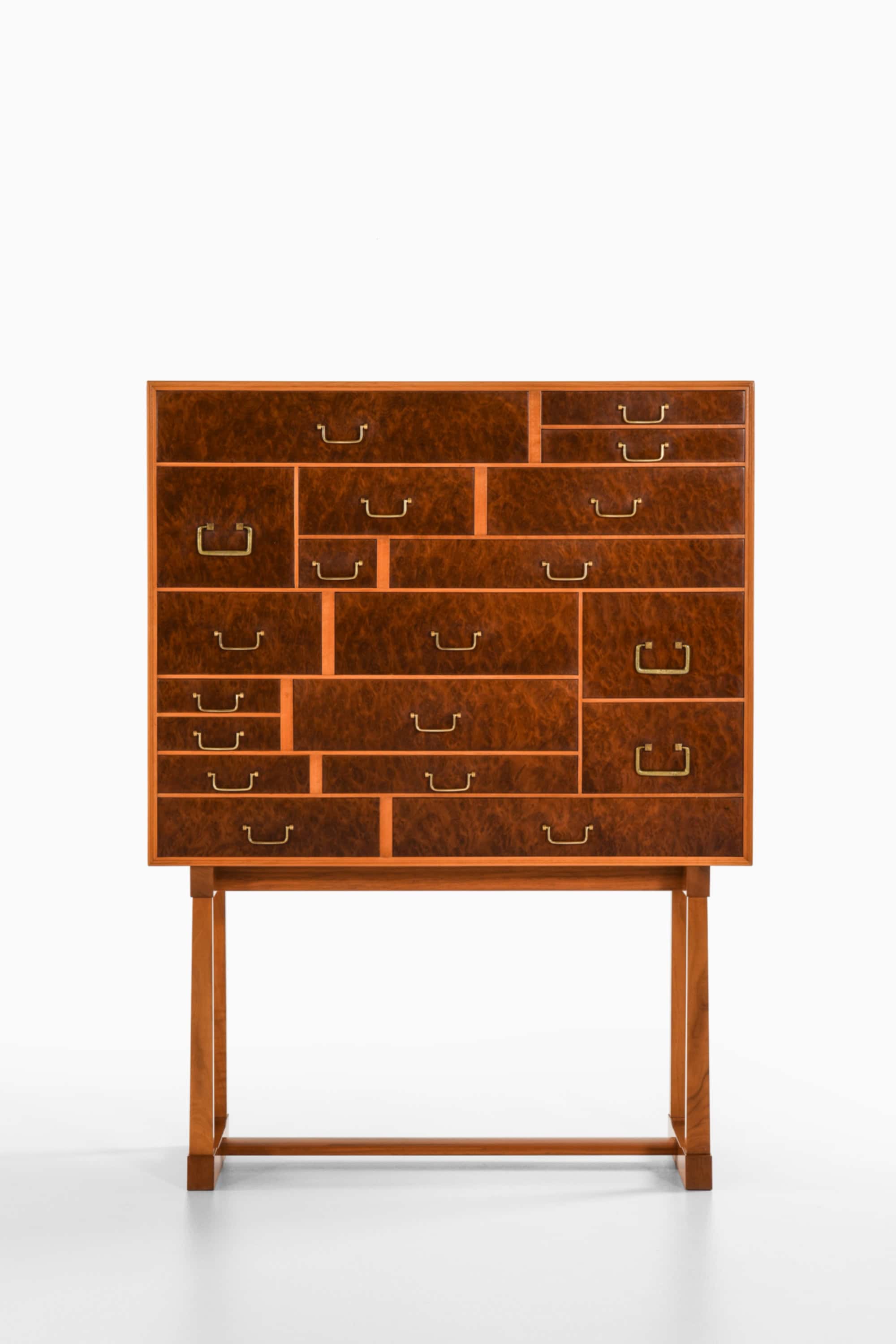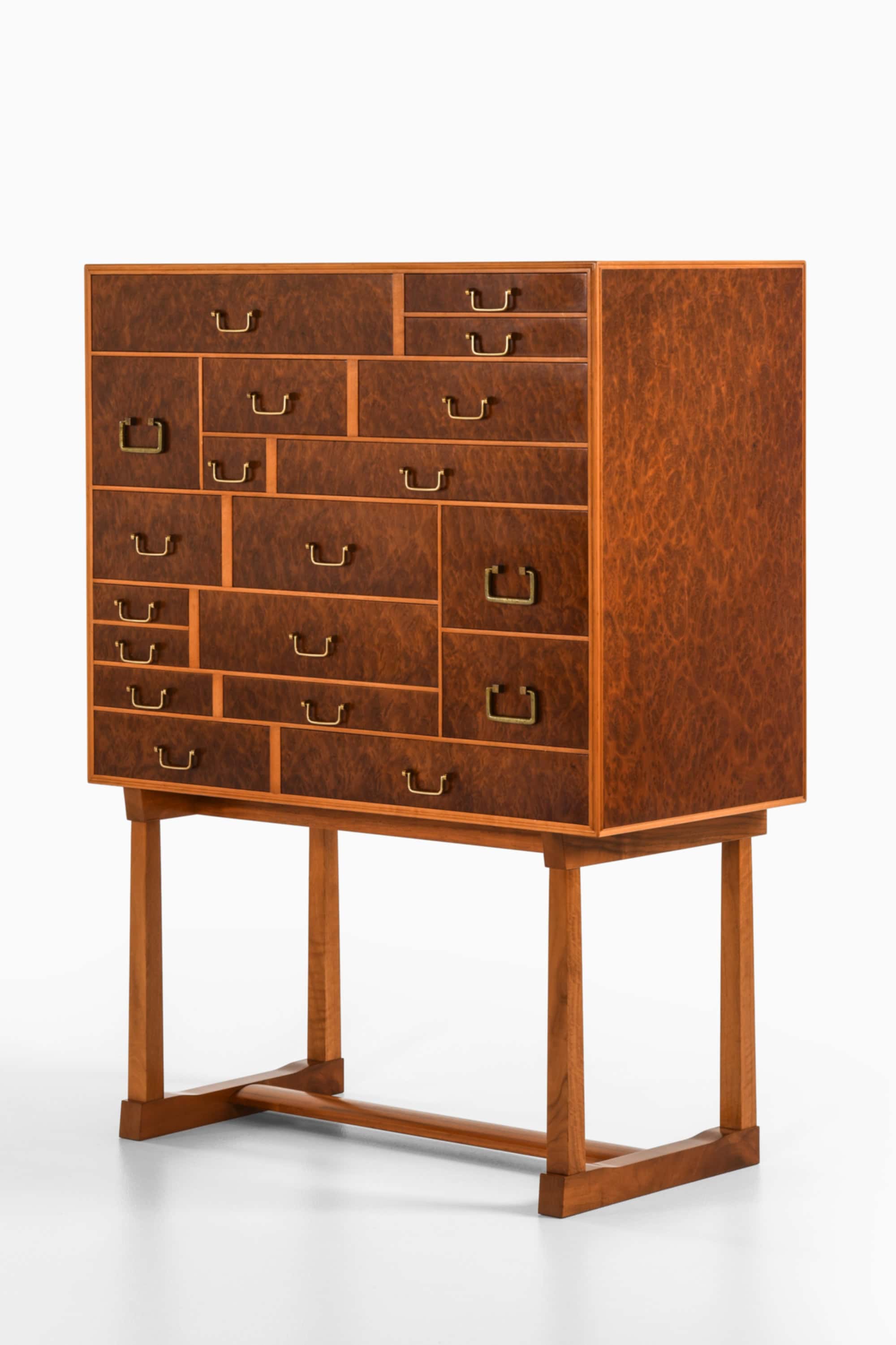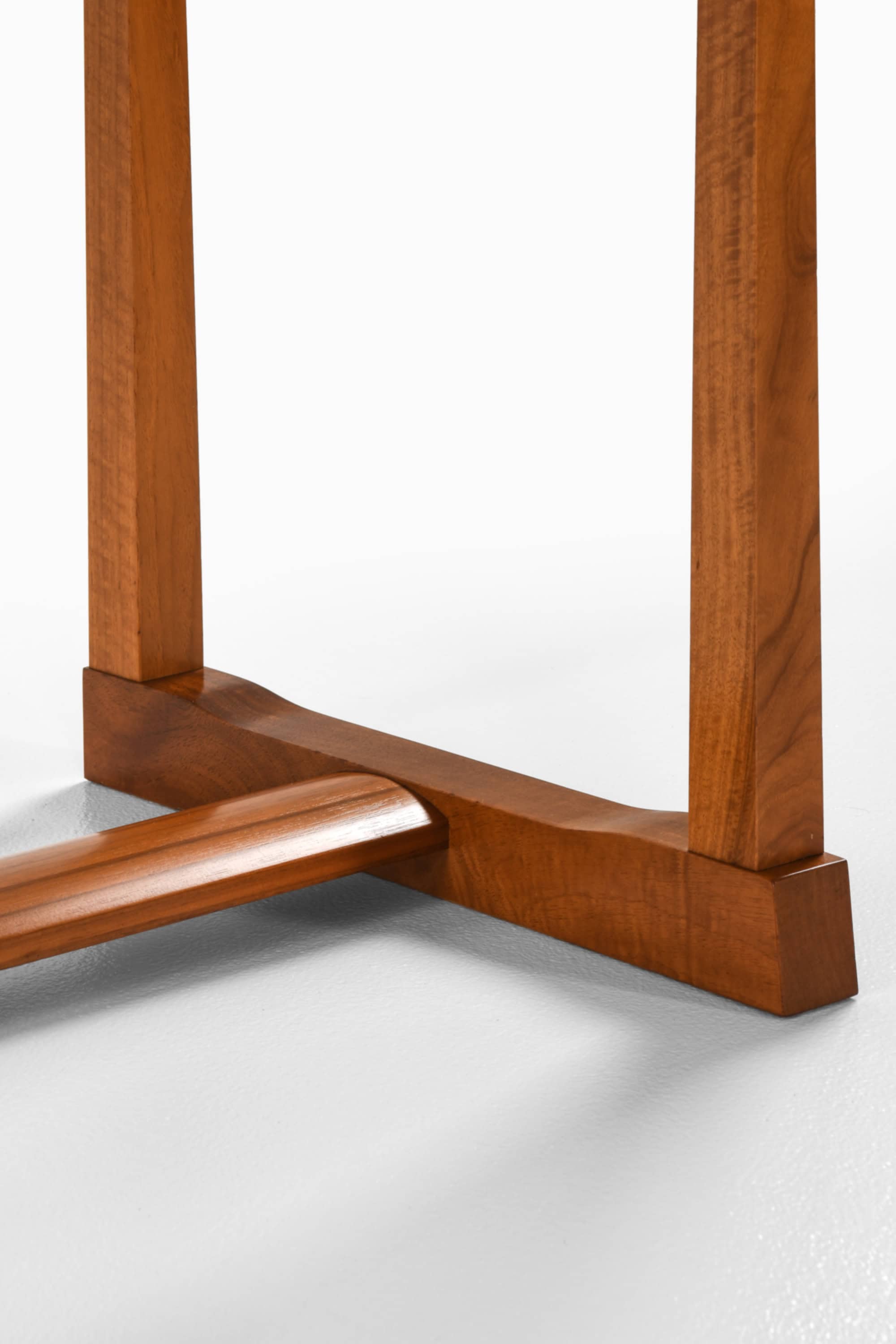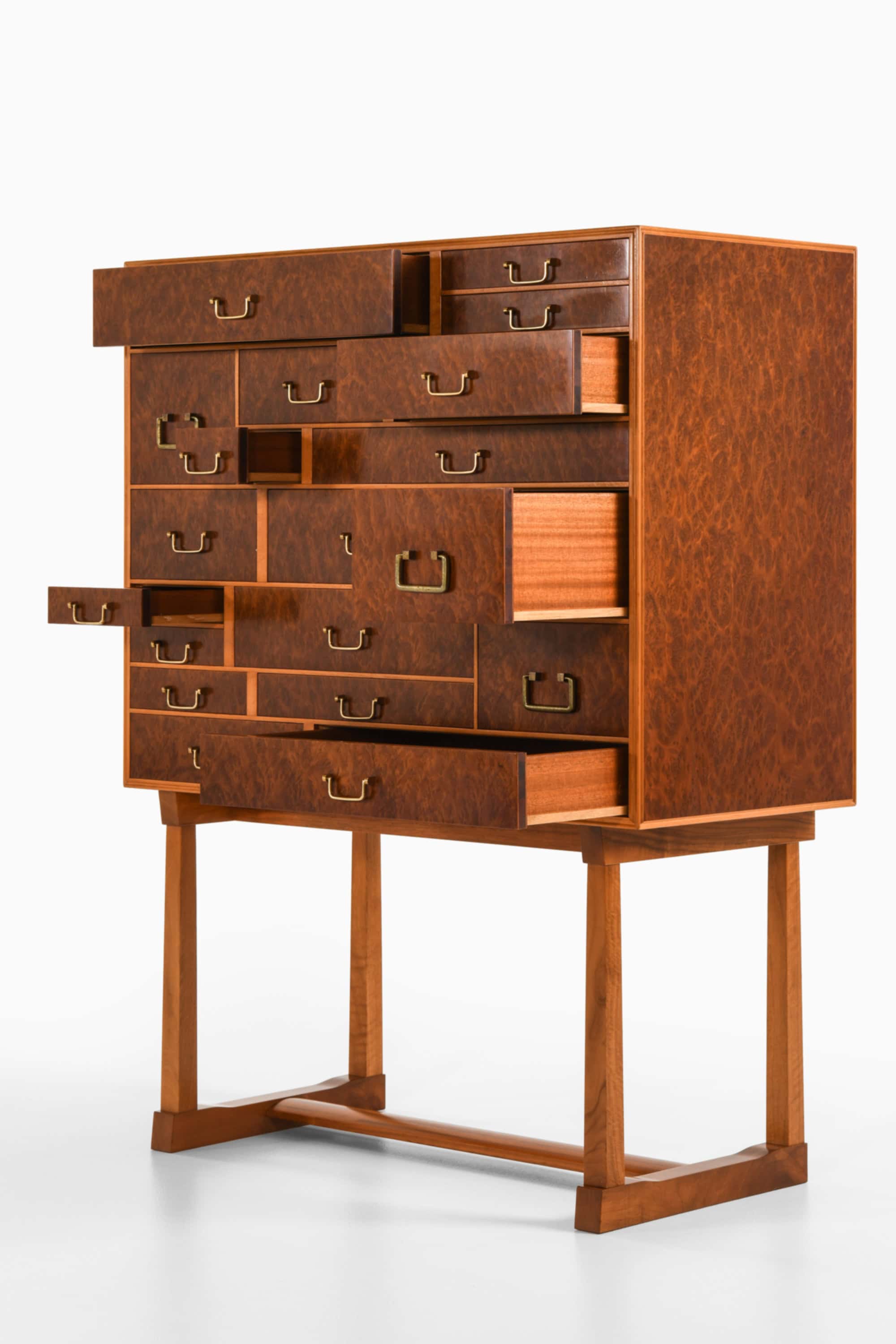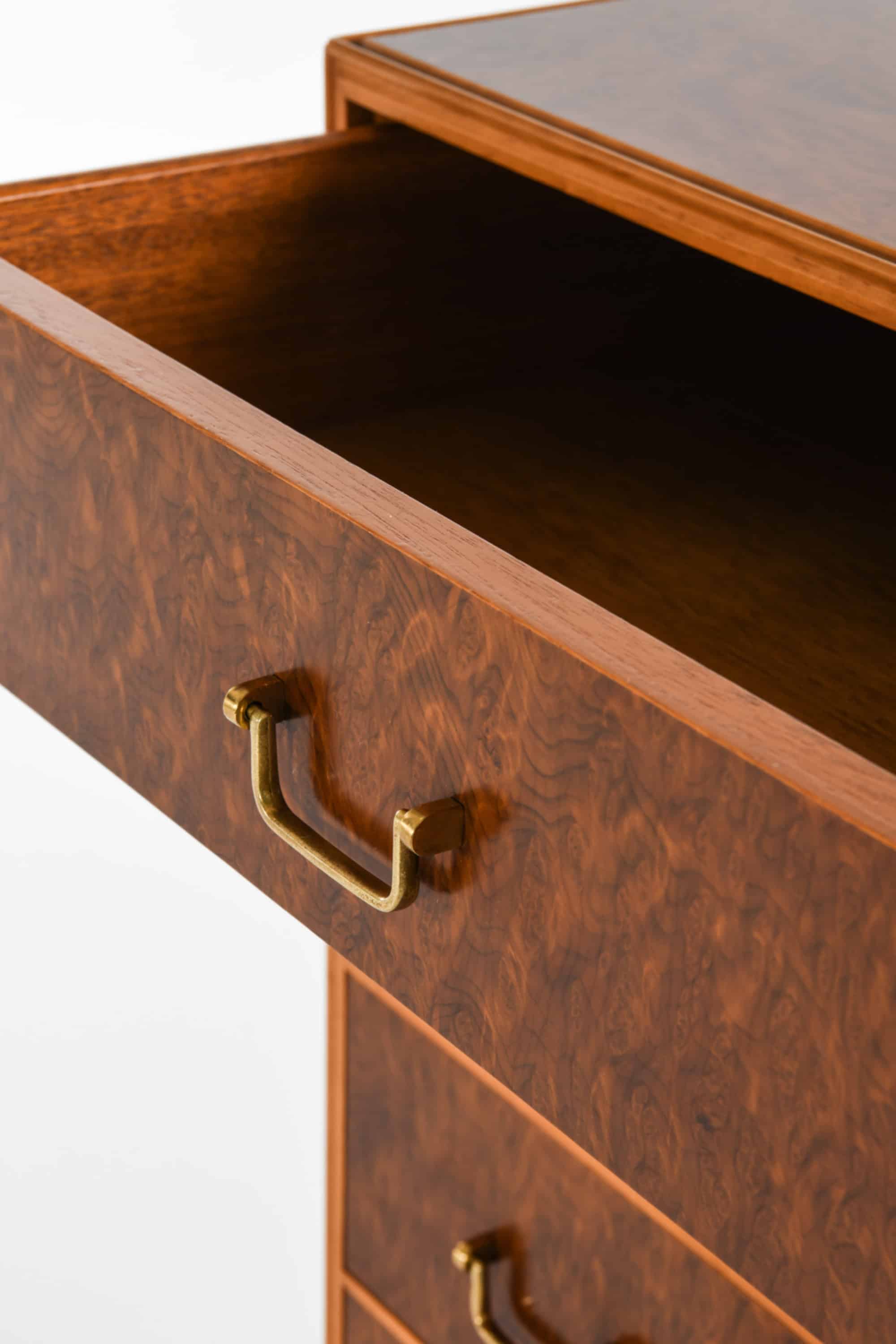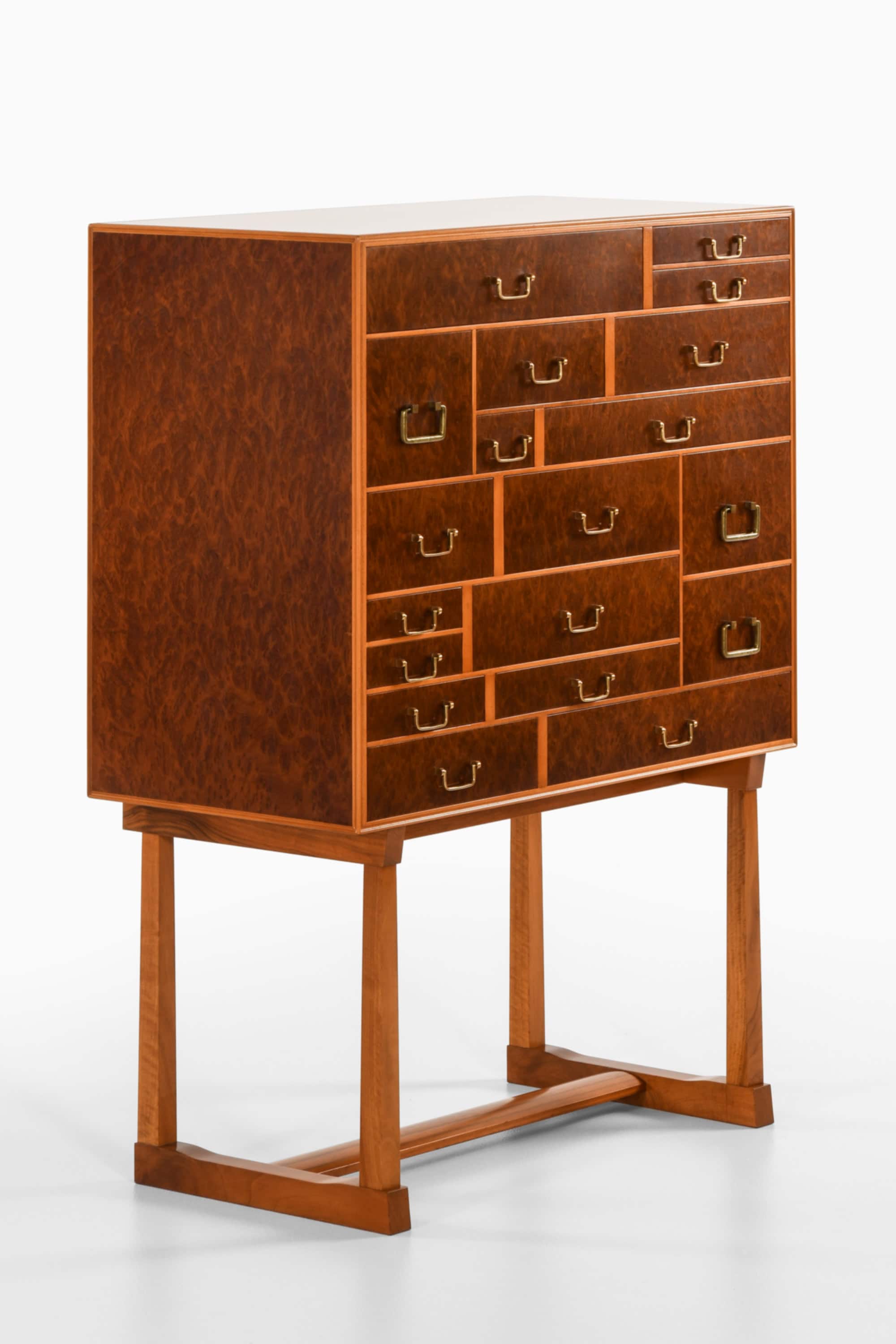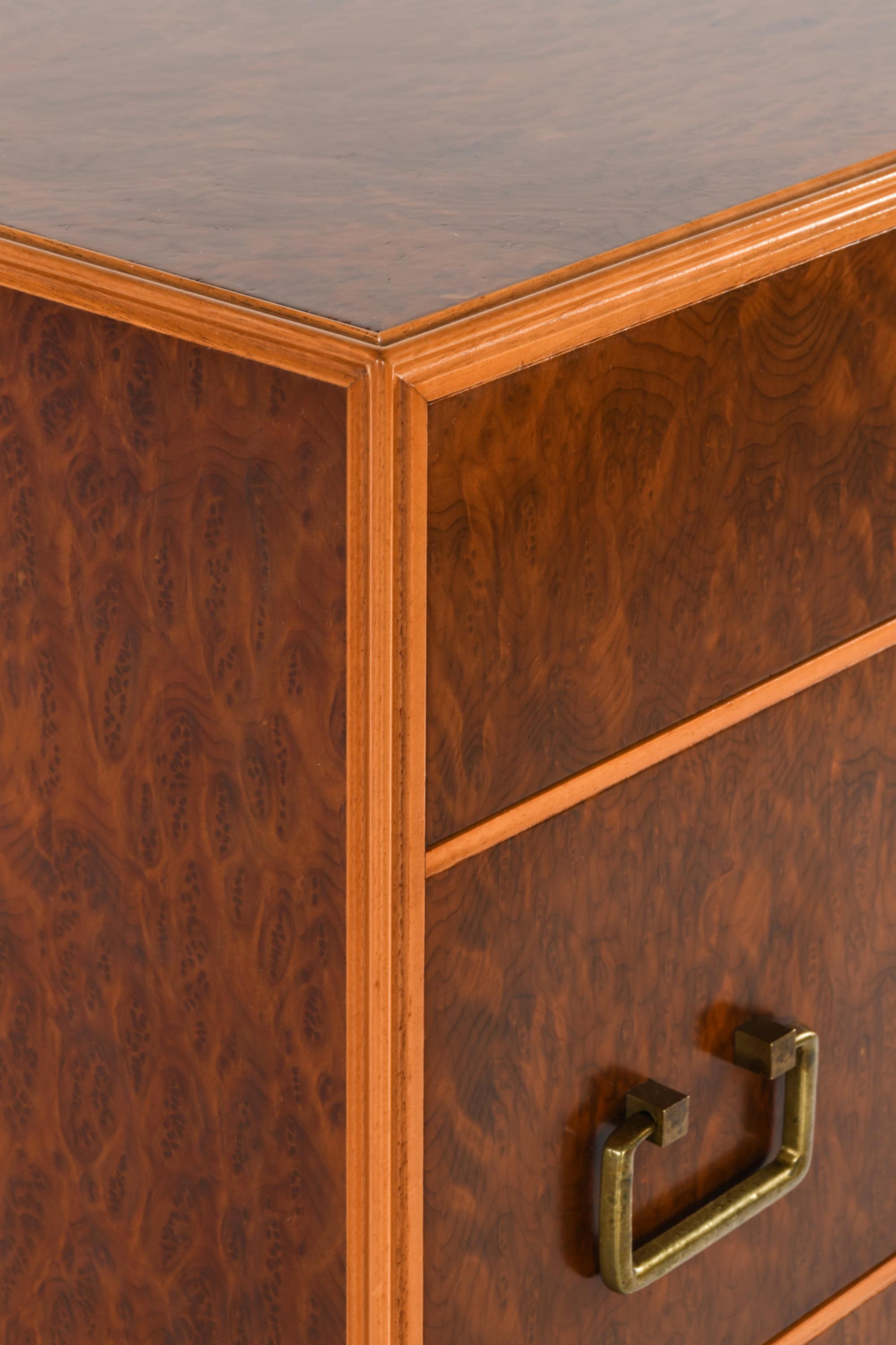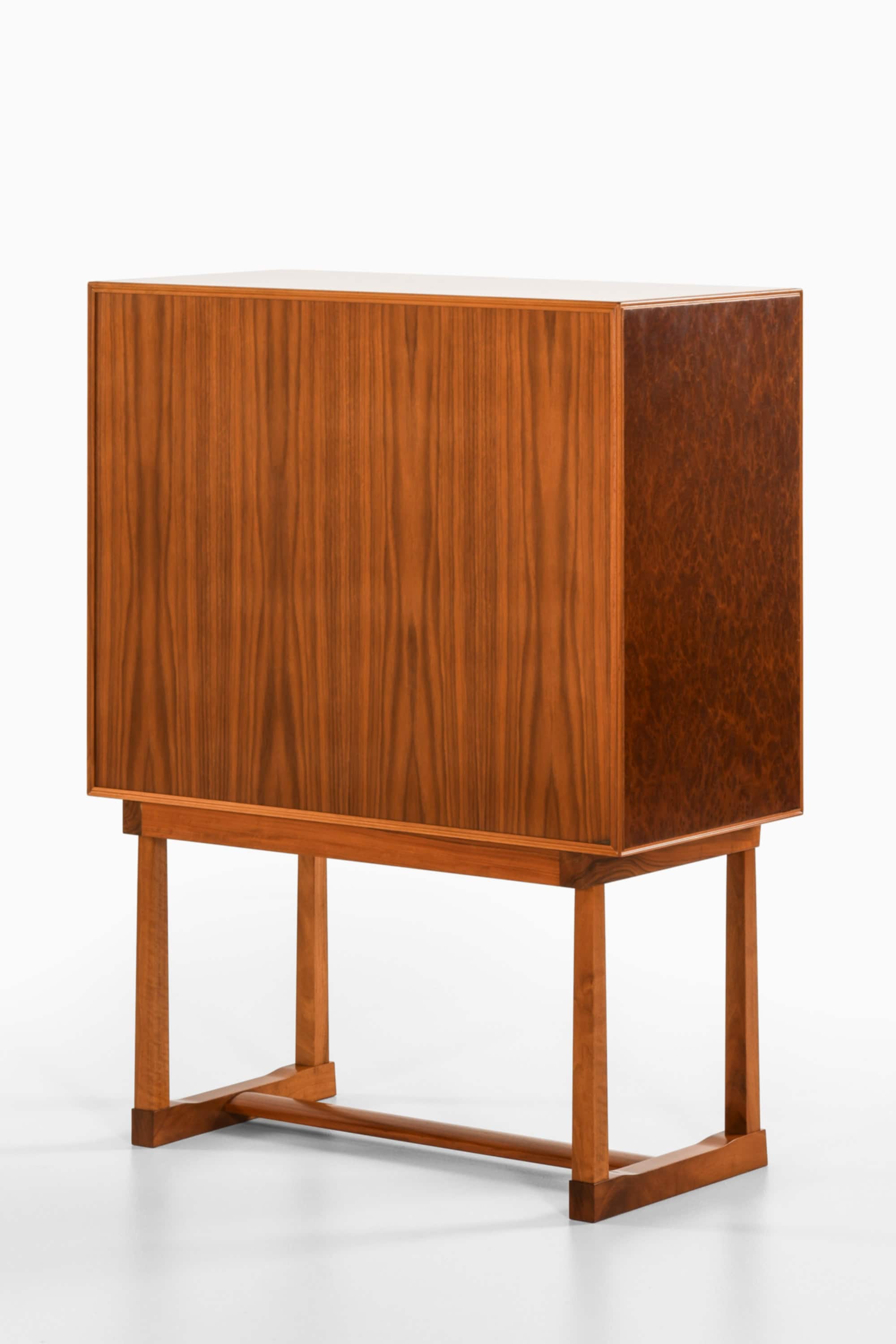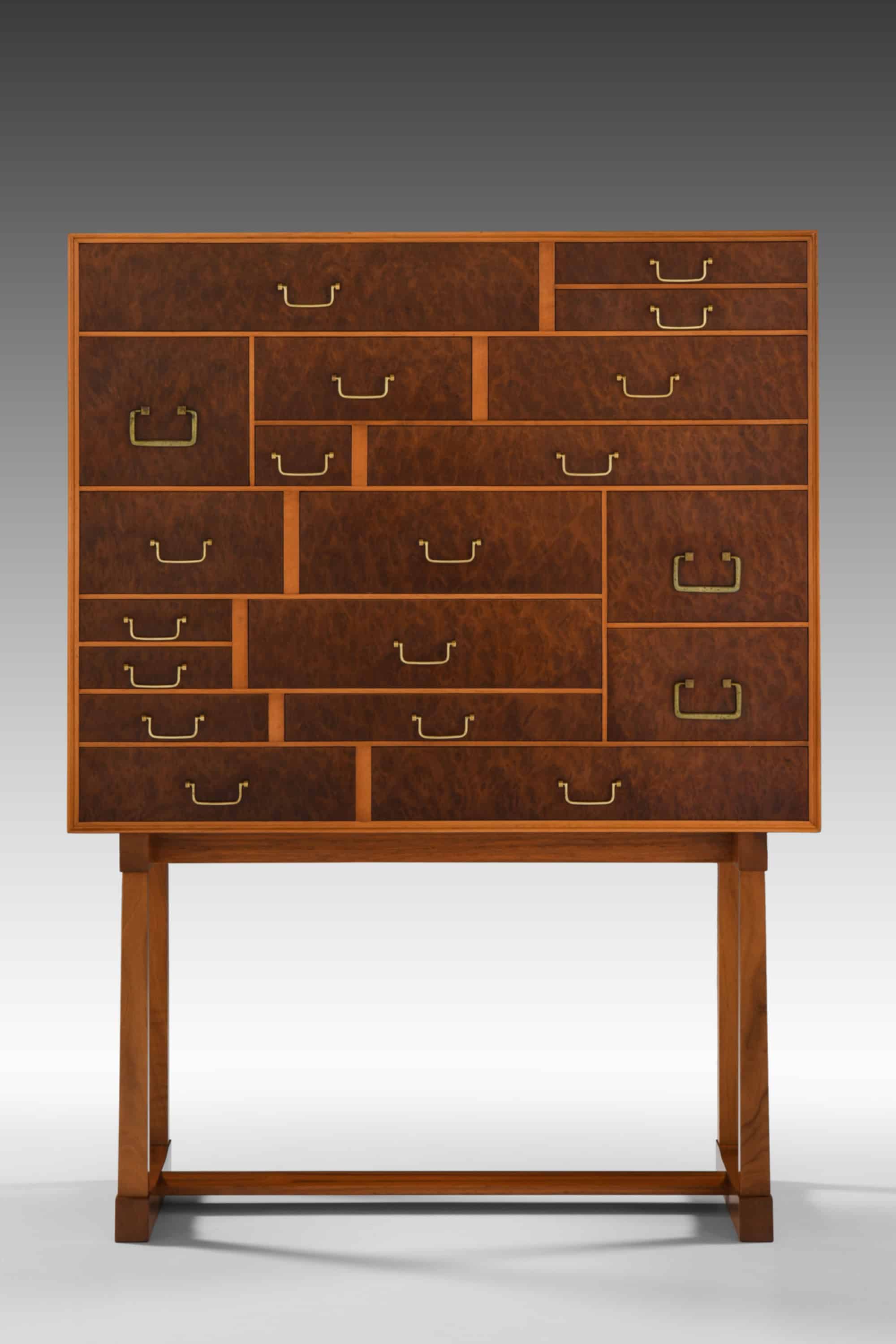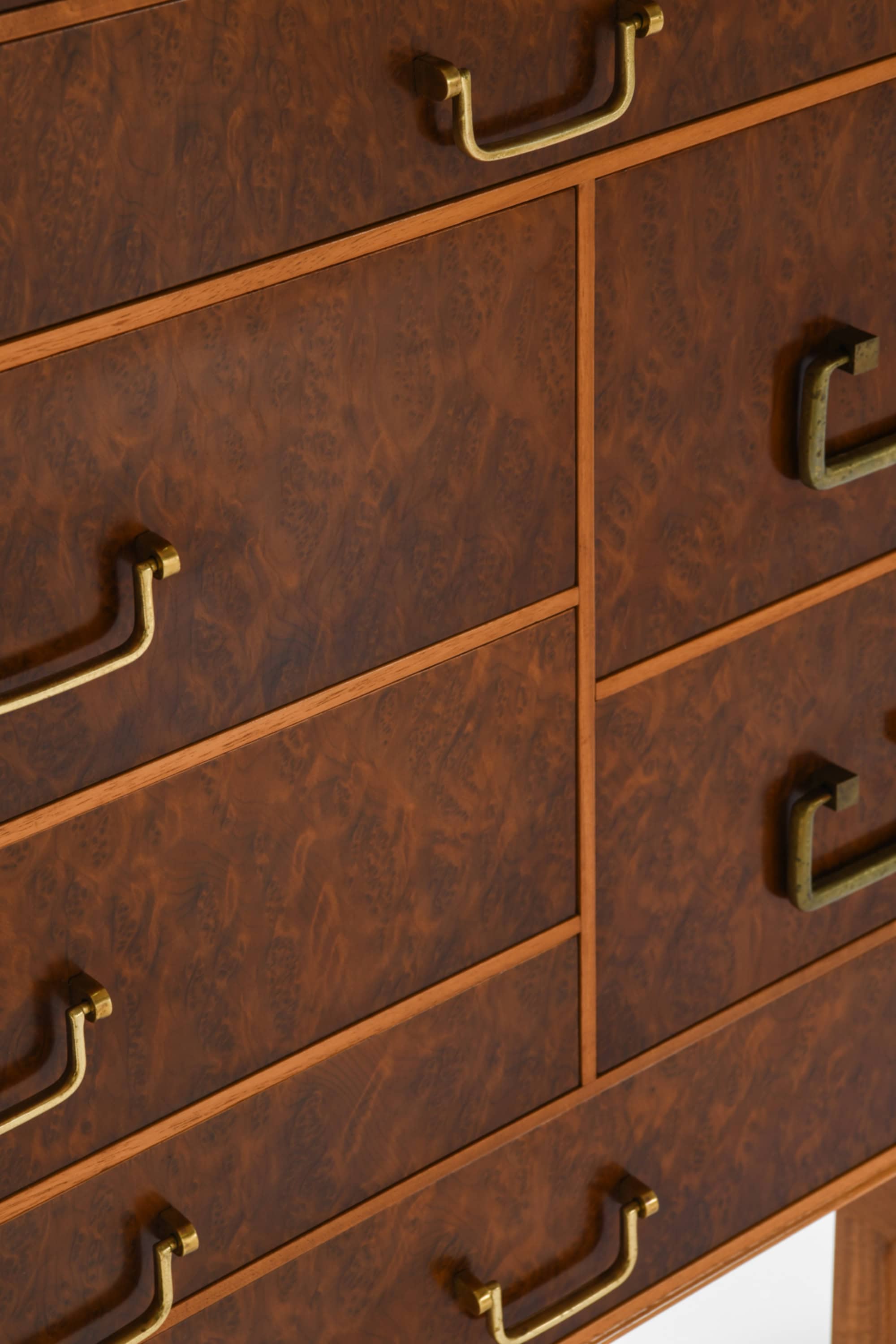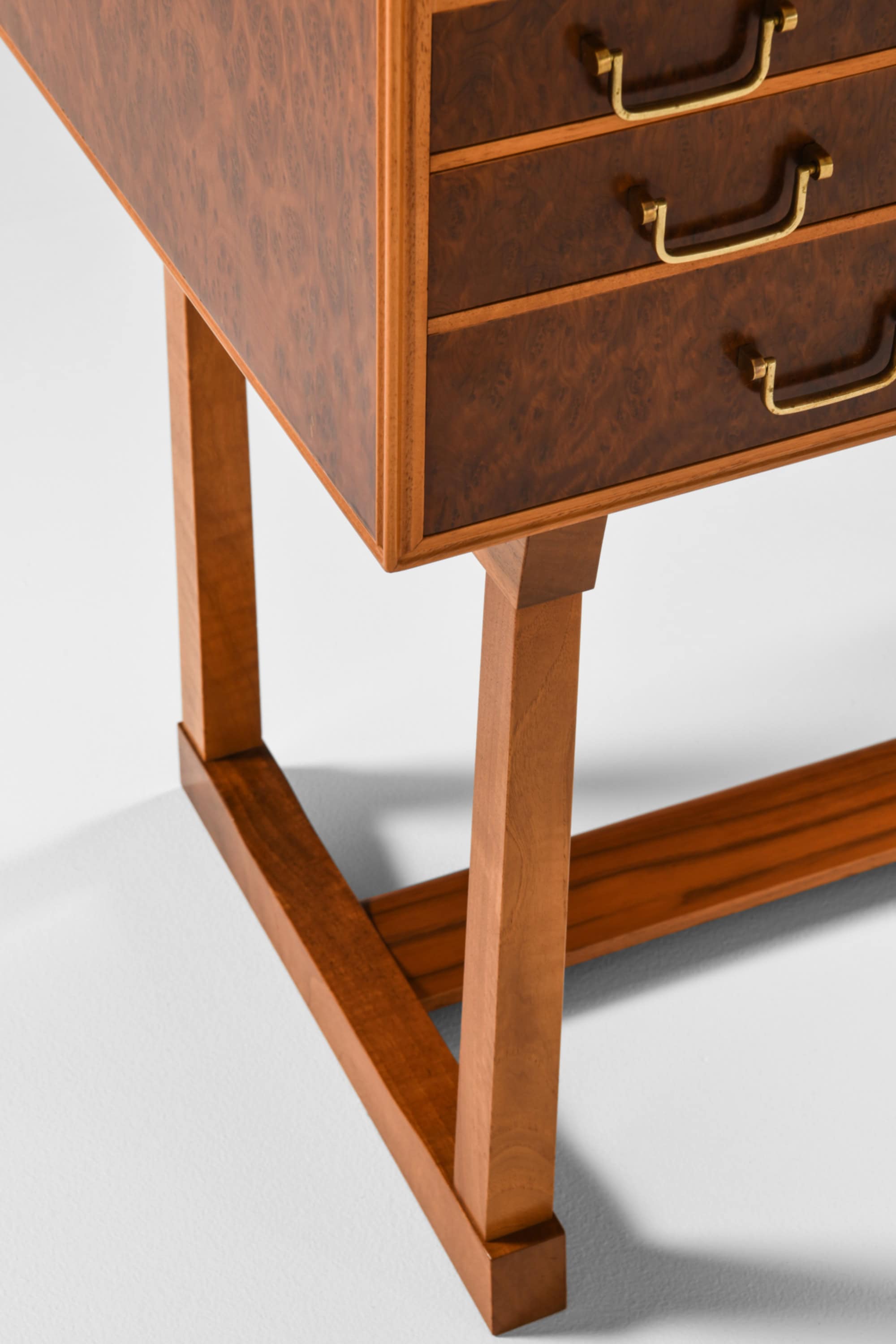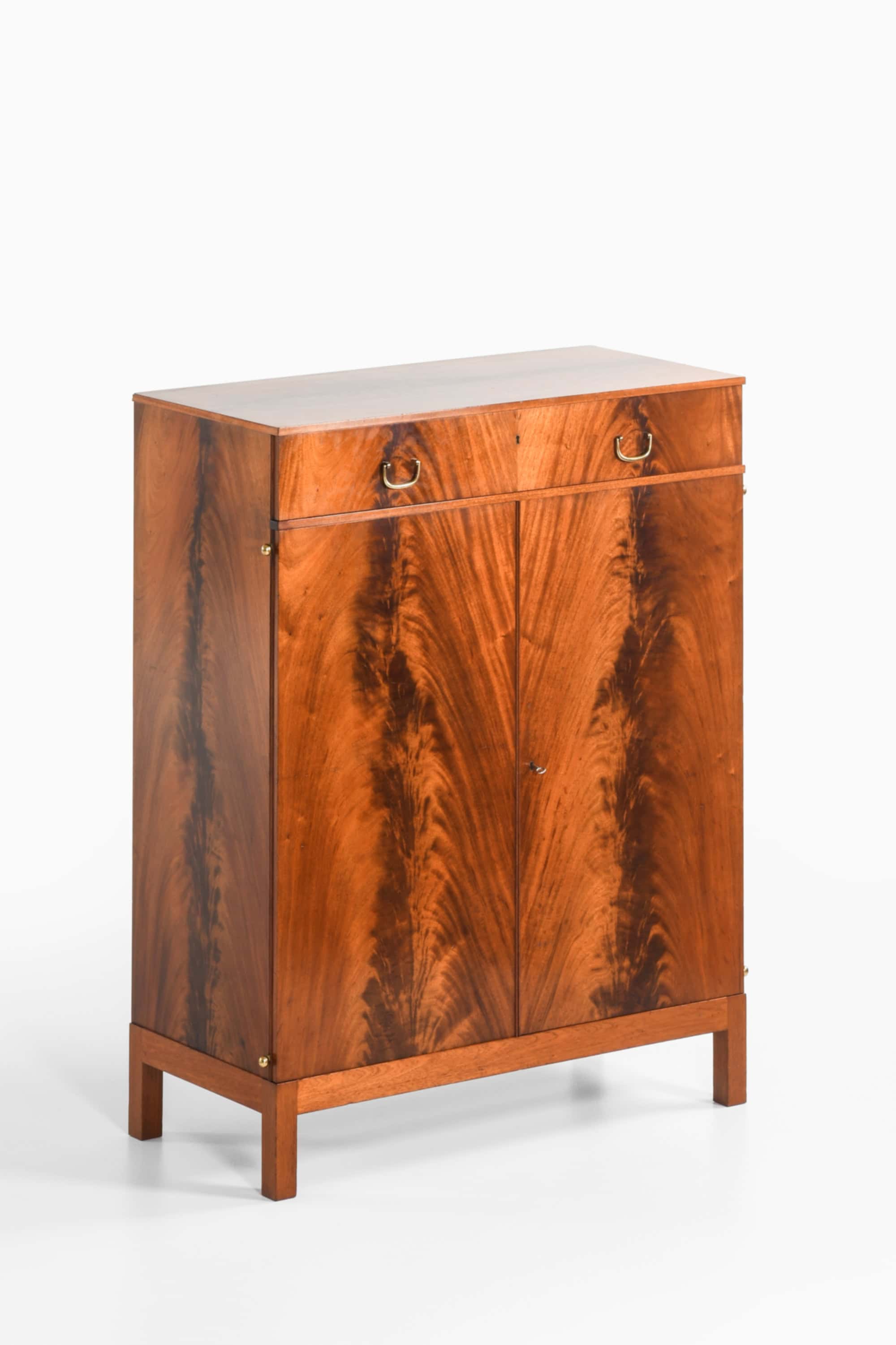Josef Frank cabinet
This exceptionally rare cabinet, model 881 known as the “Nationalmuseum Cabinet” (Nationalmuseiskåpet), was designed by Josef Frank in 1938 and produced by Svenskt Tenn in Sweden. Created at the height of Frank’s mature period, this cabinet is among the most sophisticated and symbolically rich pieces in his oeuvre. Originally titled “cabinet with 21 drawers” the final composition was modified by Frank to feature 19 drawers, a decision believed to have been made to enhance visual balance by merging four of the smaller drawers into two larger ones.
The cabinet is constructed with a frame of solid mahogany, set upon a walnut base with a stretcher-form plinth that provides both structural support and visual grounding. The body is richly veneered in redwood root and amboyna burl, presenting an intricate, marbled grain pattern across all surfaces. The drawer fronts, varying in dimension, are meticulously aligned to form an asymmetrical yet harmonious grid, reflecting Frank’s belief in the beauty of irregularity inspired by nature and urban planning. The back of the cabinet is also veneered, allowing it to stand freely in space if desired.
Each of the nineteen drawers is fitted with a cast brass pull handle, ranging in form to suit the drawer proportions. The entire piece showcases fine cabinetmaking, with dovetailed joints and careful grain matching. The natural complexity of the amboyna veneer contrasts with the cabinet’s precise architectural layout, creating a tension between ornament and rational structure—a hallmark of Frank’s design philosophy.
This cabinet was famously exhibited at the 1952 “Josef Frank – 20 Years at Svenskt Tenn” exhibition at Sweden’s Nationalmuseum. In honor of that occasion, the museum acquired a copy of this model, giving rise to the cabinet’s colloquial title. Since then, it has become one of the most iconic representations of Frank’s artistic legacy and Svenskt Tenn’s production ethos.
The cabinet is in excellent condition, with minimal signs of wear. The veneers retain their clarity and warmth, the structure is solid, and the brass pulls display a soft, age-appropriate patina.
The dimensions are 90 cm wide (35.4 inches), 45 cm deep (17.7 inches), and 120 cm high (47.2 inches).
Literature
Kristina Wängberg-Eriksson, “Josef Frank, Livsträd i krigens skugga”, Signum 1994, the cabinet depicted in color on page 112 and mentioned on page 224.
Dimensions (cm) | W: 90 / D: 45 / H: 120 |
| Producer | Svenskt Tenn |
| Decade | 1980s |
| Country | Sweden |
| Style | Scandinavian Modern |
| Material | Brass, Mahogany |
| Designed in | 1938 |
| Item Number | 250259 |
Josef Frank
Josef Frank (1885–1967) was an Austrian-born architect, furniture designer, and textile artist who became a central figure in Swedish modernism. He is best known for his vividly patterned textiles and distinctive approach to furniture and interi...
Read more
